Laminar Flow Design | LFD32-003: Spitfire Mk XII Conversion
Reviewed by Kevin Futter
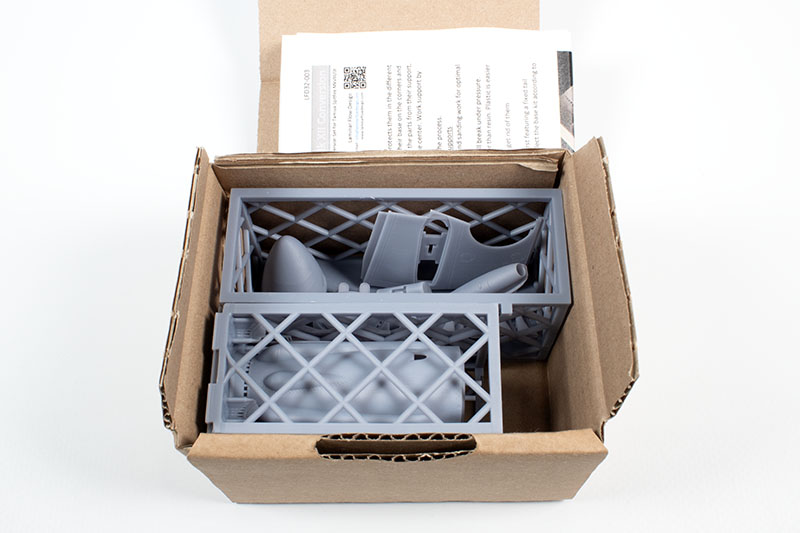
Laminar Flow Design is a relatively new company from Belgium, producing 3D-printed conversion sets. So far they have specialised in 1/32 sets for the Tamiya Spitfire, and this latest set is no different, being designed to convert that company's Mk VIII/IX kit to a Mk XII.
Our review sample arrived in a small, sturdy box, and as can be seen in the photo above, the contents are beautifully and intelligently packaged. All the parts have been printed in situ within two protective cages, and there's even a small spigot moulded into the larger cage that prevents the two from moving against each other. Brilliant!
My apologies in advance for not removing the parts from their cages for photography, but this is really best done when you're ready to use them, otherwise they risk being lost or damaged. And since I intend to use this conversion in the future, I elected not to take the risk. Hopefully the photos illustrate the quality of the parts and packaging regardless.
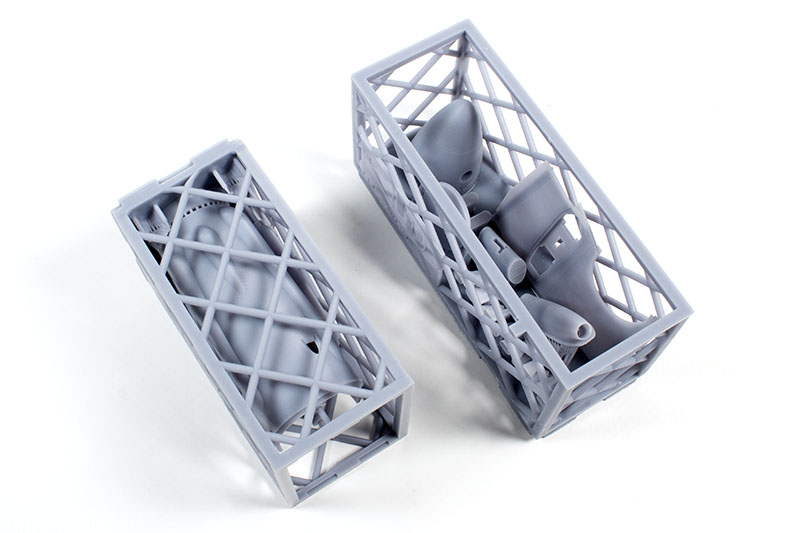
The smaller of the two cages contains a one-piece replacement nose with the appropriate contours for a Griffon-powered Spitfire XII, along with 5 new propeller blades (4 required plus a spare), a nose cap, prop mounting pin and retaining cap. There are also a pair of supercharger scoops for the nose, which includes a spare in case something goes wrong. Again, brilliant from Laminar Flow Design.
The replacement nose is not designed to accommodate the Tamiya kit's engine, but since the Griffon nose is such a prominent feature of the Mk XII Spitfire, it hardly makes sense to all-but remove it by displaying the engine anyway. What the new nose does feature, however, is a cleverly-engineered method for attaching it to the Tamiya airframe:
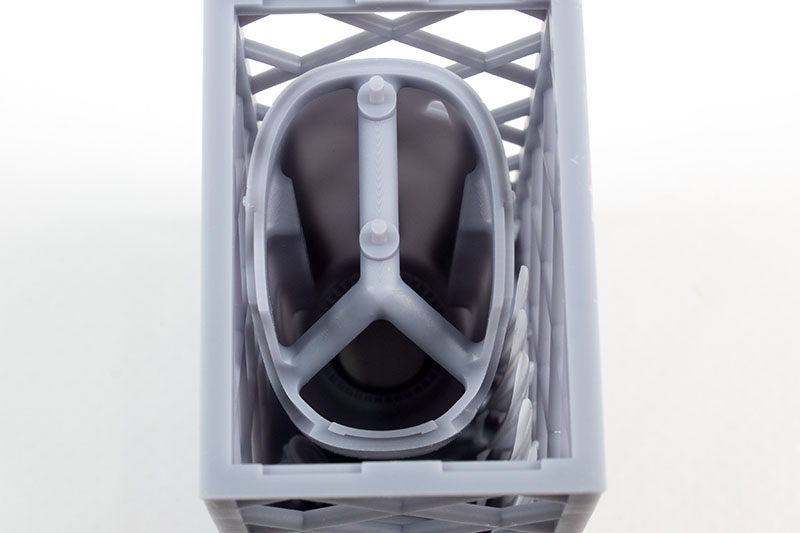
The quality of engineering here is outstanding!
In the photo below we can see the 5 included propeller blades:
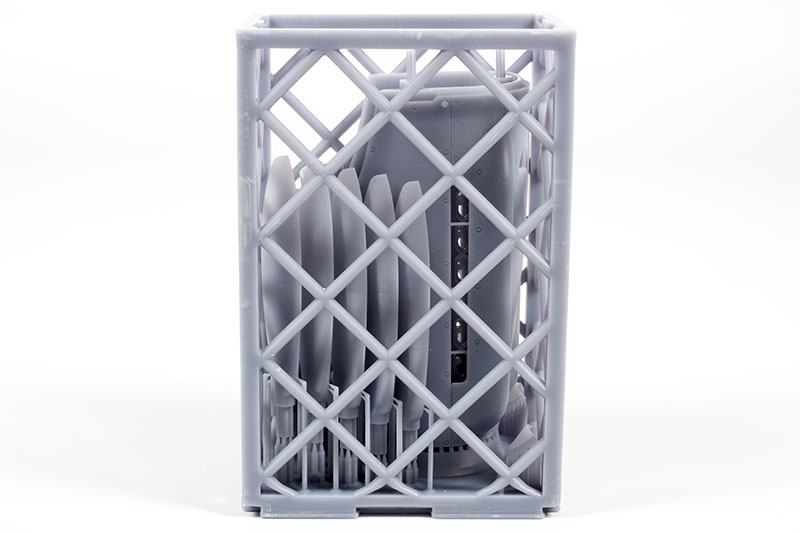
And likewise, one of the two supplied supercharger scoops:
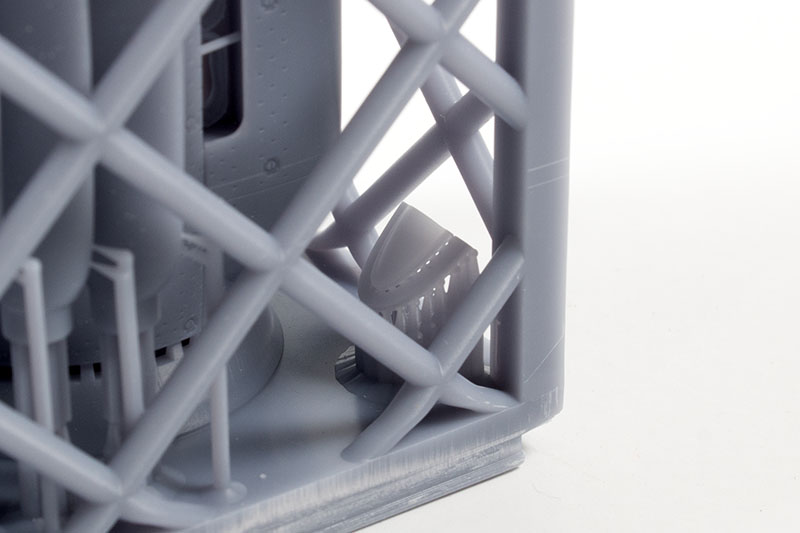
The photo makes them look huge, but they are in fact tiny, and once again Laminar Flow Design has provided a thoughtful and intelligent solution to facilitate their safe removal, with a printed buffer that protects the parts from the main supports. This then makes removing the parts themselves from the buffer piece relatively easy.
In the photo below we can see the front of the cap for the nose:
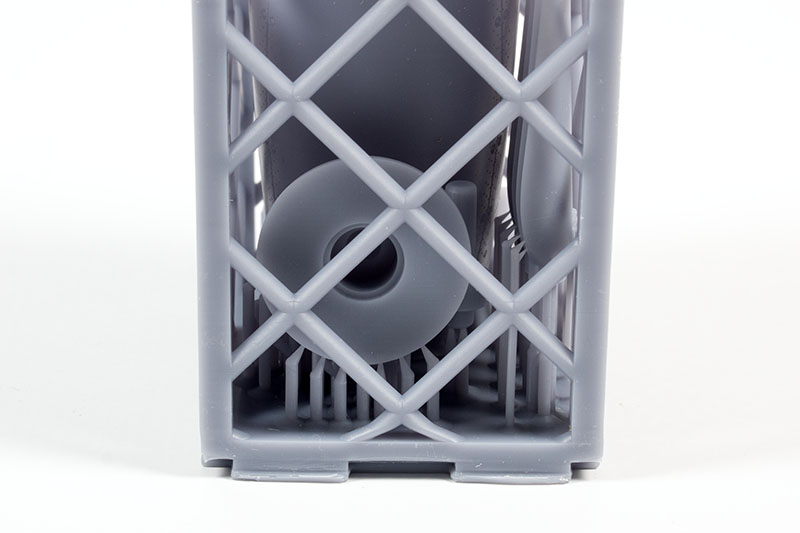
The larger of the two cages contains the remainder of the conversion parts, comprising a new spinner, spinner back plate, exhaust stacks, new oil cooler and associated under-wing panel, 2 carb intake grilles (one spare), and an insert for the oil cooler.
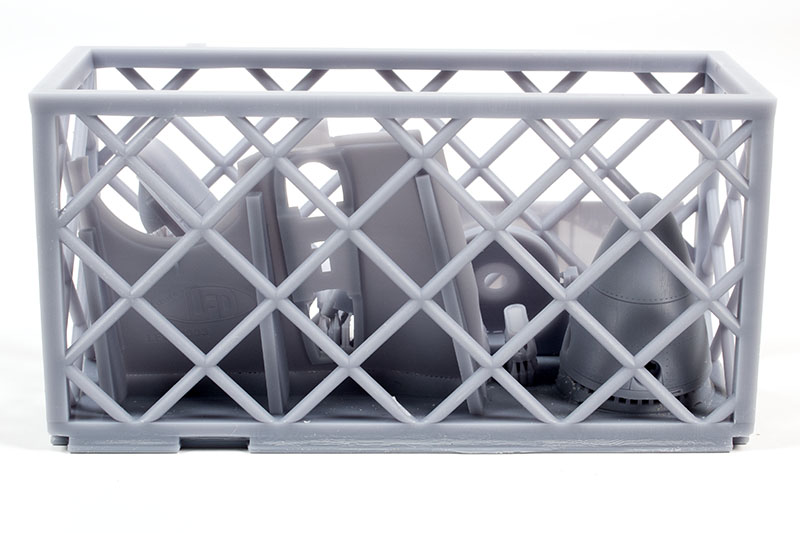
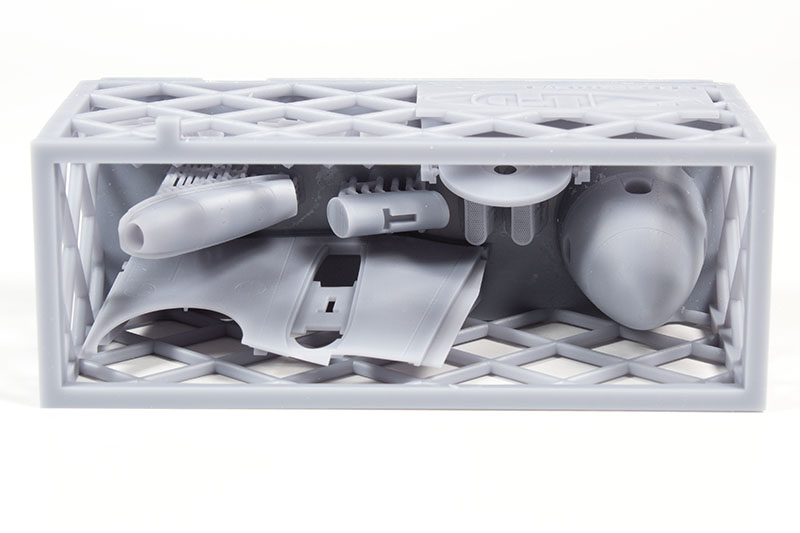
The quality of the 3D printing here is as good as anything I've ever seen, as evidenced by the ultra-fine openings on the exhaust stacks:
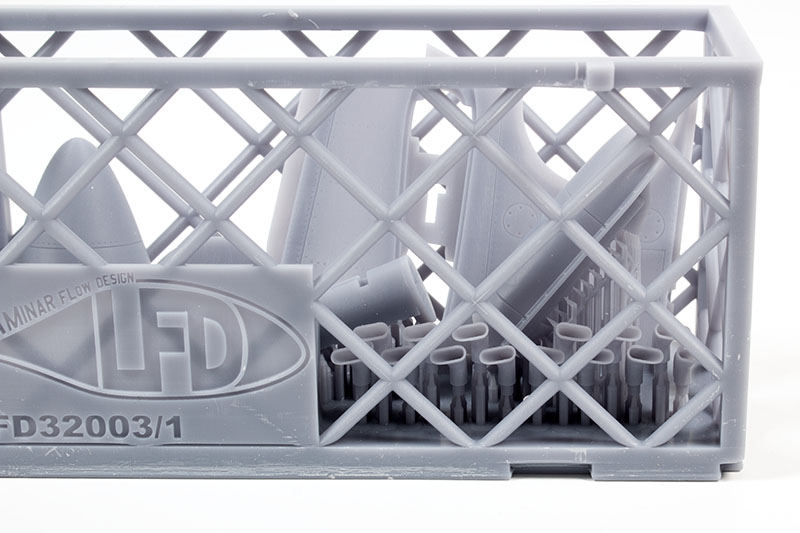
Similarly, the opening on the front of the oil cooler is exceptionally fine:
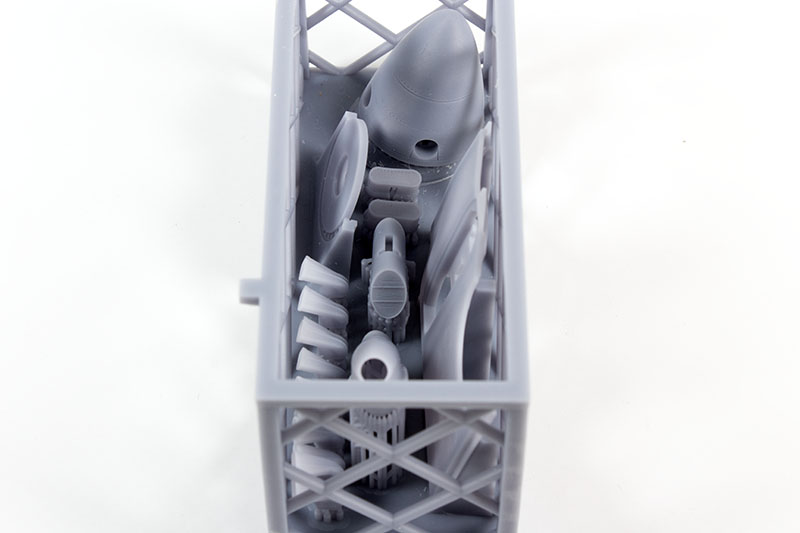
Included in the set is an 8-page A5 instruction booklet. This consists of text instructions, photos and CAD renderings illustrating the process, and drawings for 2 paint schemes.
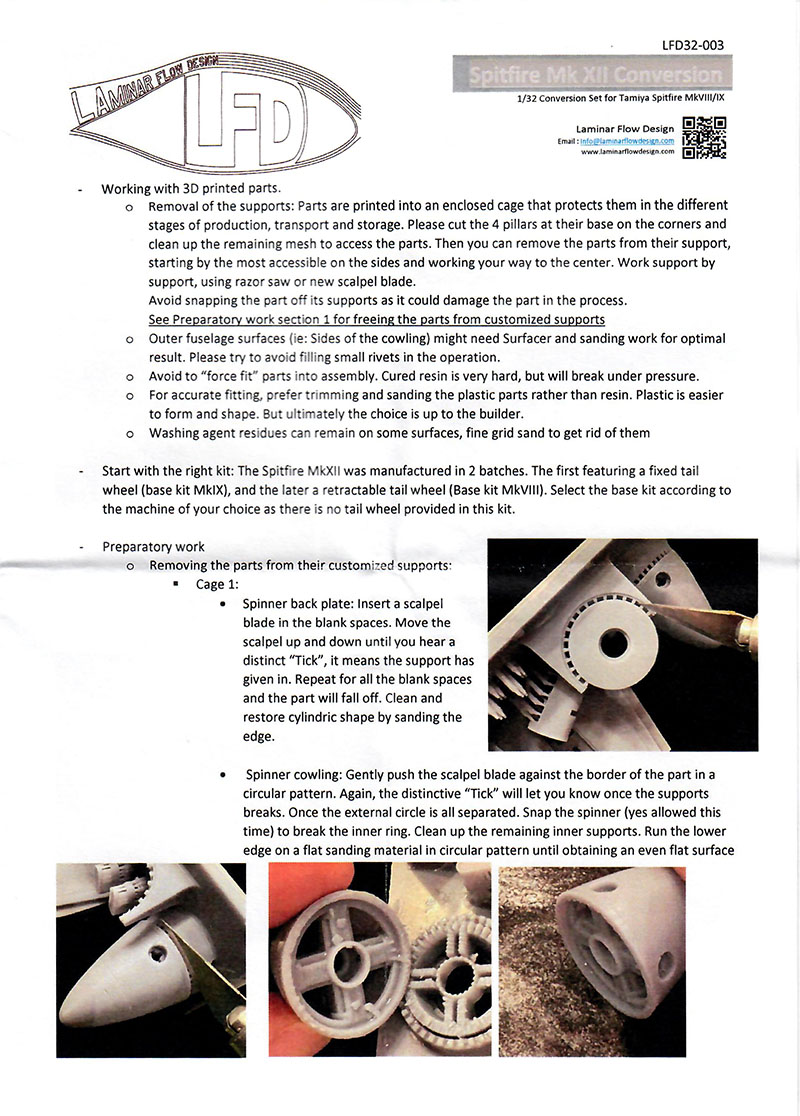
These instructions will require careful study prior to commencing working with the conversion, as they contain a lot of important information—including how best to remove and prepare the parts. Read twice, cut once!
Tucked away inside the the folded instructions is a set of 6 vinyl masking sheets, containing masks for all the markings featured on the 2 painting schemes illustrated in the instructions.
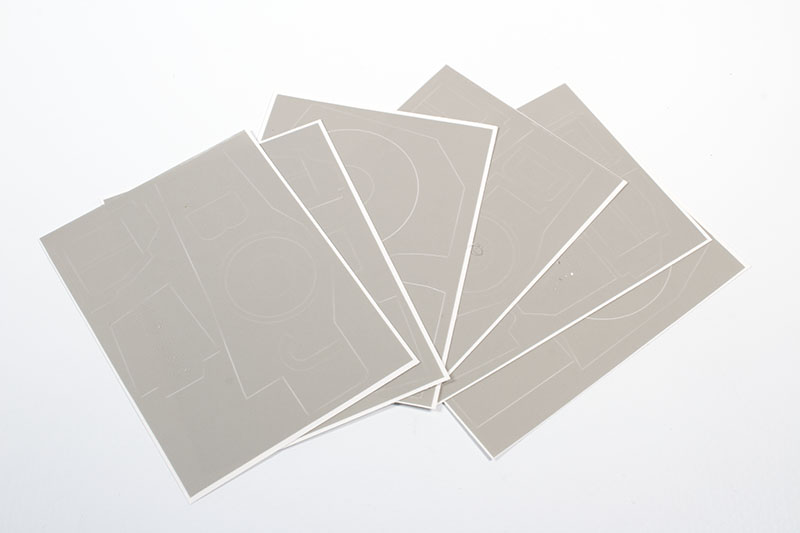
These are as follows:
- Scheme A: Spitfire Mk XII MB840 "EB-J" 41 Squadron RAF April 1944
- Scheme B: Spitfire Mk XII EN625 "DL-K" 91 Squadron RAF May 1943
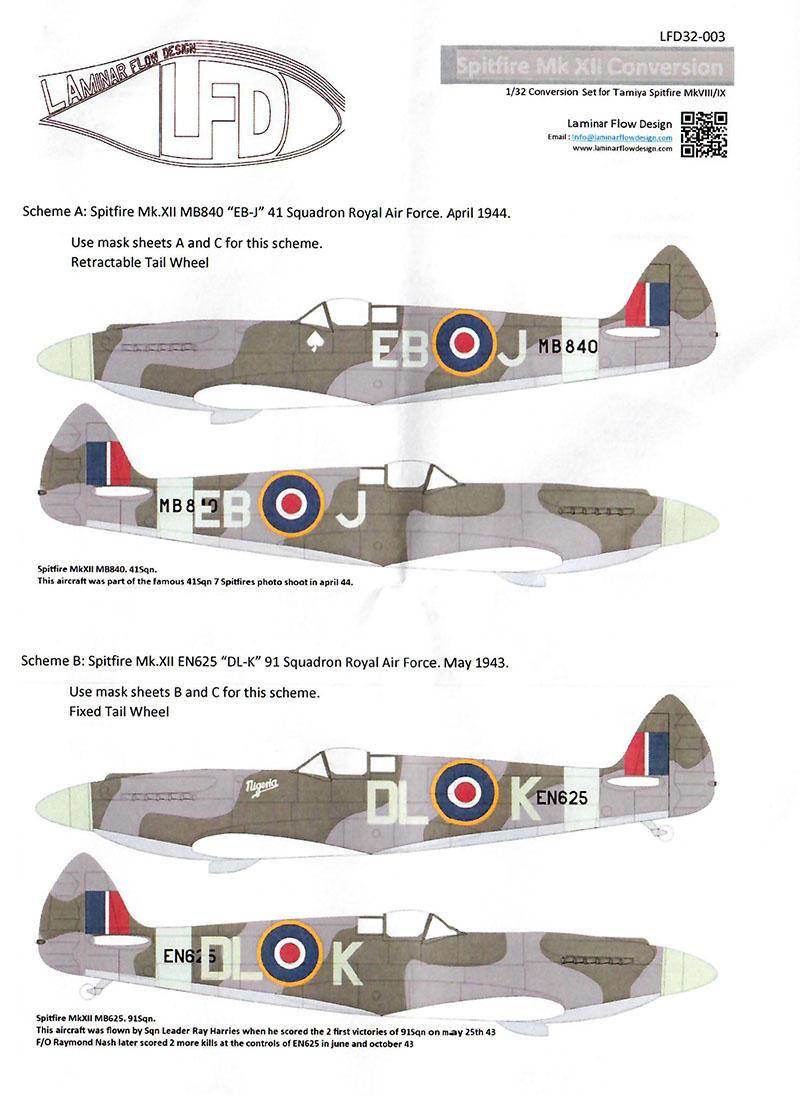
Conclusion
This is an exceptional conversion set, and shows just what a dramatic impact 3D design and printing is having on the aftermarket sector of our hobby. The intelligent and thoughtful engineering of the packaging—including the provision of spares for delicate parts—is just one outstanding feature. The parts themselves are exquisitely designed and expertly printed, and in my sample at least, appear to be flawless.
The inclusion of a full set of paint masks (minus the camouflage patterns) is another welcome feature, and superior in my opinion to a set of low-quality home-printed decals.
It remains to be seen just how easy the parts are to work with, and how well they fit the donor kit, but no conversion set of this nature is foolproof, and some modelling experience is definitely required. But if the quality of the parts and packaging is anything to go by, we can only assume that any difficulties will be kept to a minimum.
This conversion set is of highest quality, and is unreservedly recommended.
Review sample courtesy of Laminar Flow Design (website | Facebook page).
© Kevin Futter 2024
This review was published on Sunday, April 07 2024; Last modified on Sunday, April 07 2024
